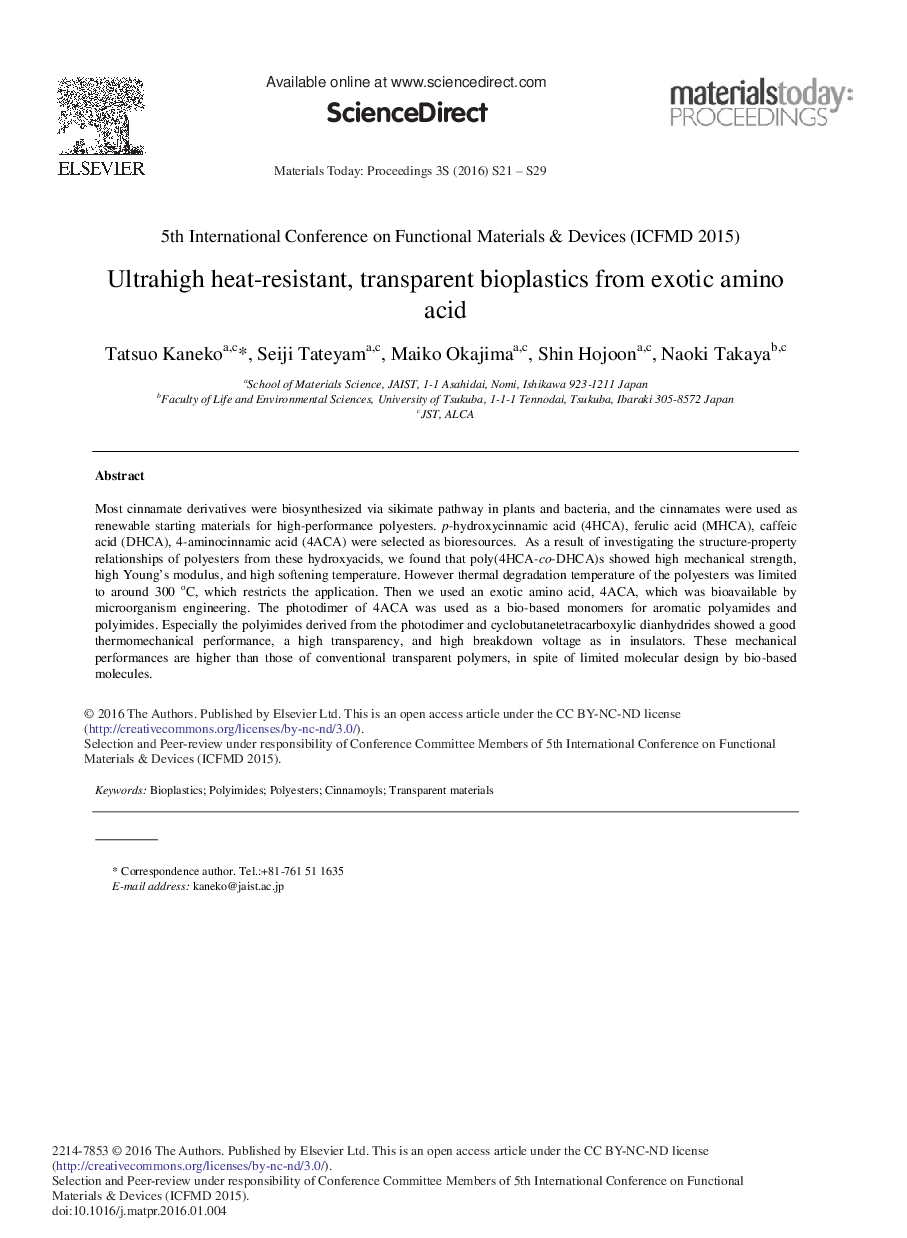| Article ID | Journal | Published Year | Pages | File Type |
|---|---|---|---|---|
| 1630965 | Materials Today: Proceedings | 2016 | 9 Pages |
Most cinnamate derivatives were biosynthesized via sikimate pathway in plants and bacteria, and the cinnamates were used as renewable starting materials for high-performance polyesters. p-hydroxycinnamic acid (4HCA), ferulic acid (MHCA), caffeic acid (DHCA), 4-aminocinnamic acid (4ACA) were selected as bioresources. As a result of investigating the structure-property relationships of polyesters from these hydroxyacids, we found that poly(4HCA-co-DHCA)s showed high mechanical strength, high Young's modulus, and high softening temperature. However thermal degradation temperature of the polyesters was limited to around 300 oC, which restricts the application. Then we used an exotic amino acid, 4ACA, which was bioavailable by microorganism engineering. The photodimer of 4ACA was used as a bio-based monomers for aromatic polyamides and polyimides. Especially the polyimides derived from the photodimer and cyclobutanetetracarboxylic dianhydrides showed a good thermomechanical performance, a high transparency, and high breakdown voltage as in insulators. These mechanical performances are higher than those of conventional transparent polymers, in spite of limited molecular design by bio-based molecules.
